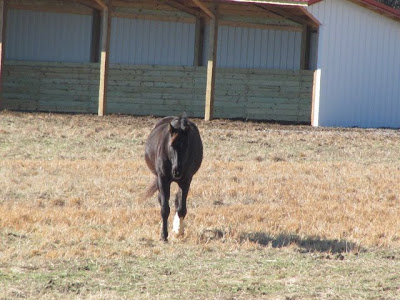Haying time comes all in a rush and there is a huge financial impact centered around weather and machine delays. The trade off is volume vs. nutritive quality of the hay. As hay matures, the volume goes up but the quality goes down. Maximizing both quality and quantity relative to the livestock species in question is the goal. For growing beef cattle, lactating dairy animals (and growing heifers) as well as horses in work, the optimal window for getting high quality grass hay up is less than a week long and it occurs from just before until just after the grass heads out. With alfalfa, the quality/quantity peak occurs from mid bud to very early bloom....maybe ten days to two weeks if the weather is optimal. Hay quality declines linearly (and rapidly) once peak nutritive quality is reached.
A two week delay at the wrong time of year is often the difference between excellent quality and worthless junk. Regardless of livestock species, excellent quality hay = markedly improved performance on (often dramatically) reduced quantities of grain. For those of us in the grass fed beef business, getting up good hay becomes even more critical because we can't supplement an animal's growth by feeding grain, even when it makes economic sense to do so. I need the best forage I can make in order to put weight on in an economically efficient manner in seasons when pasture growth is minimal.
Getting hay put up at the right time is critical, and in humid areas of the country weather is often an impediment to getting forage up when it needs to be. This is especially true in the spring when the grass is lush and wet and the weather is often still cool (and wet). In many cases, trying to bale good quality dry hay in the spring is more or less a futile experience. It takes three or four warm, dry, sunny days in order to cure early spring forage enough to put it in the barn and in this part of the world getting three or four warm, sunny dry days in a row in early April is chancy at best. As such, for most types of cattle the first cutting is often put up as baleage (wilted, baled and immediately wrapped in white plastic) or haylage (wilted, chopped and blown in some type of silo). This reduces the length of time required to dry hay from three or four days to a much more manageable one to two days. As a general rule, it's much easier to bale second and later cuttings as dry hay because these tend to occur in the middle of the summer when it's consistently hotter and there are longer periods between rains.
Of course not every animal on the farm needs to get fed high-test hay every day, and it's important to match forage quality to an animal's ability to utilize it. Most of our retired horses don't require exceptional amounts of protein or energy in order to maintain homeostasis. Because of this we can make use of some well put up (dry and weed free) but later cut hay that would be less suitable for growing horses or horses in work.
Hope everyone had a great weekend!
_____________________________
Murphy, Boo, Alex, B-Rad, Darby and Ogie making their way through the pasture yesterday. Everyone is pretty sedate but at about the 18 second mark B-Rad shows off his jumper skills and jumps the little ditch.
Wiz, Dutch, Boo, Alex, Chili, Clay and Fuzzy
Chimano and Winston (Asterik in the background)

Norman

Romeo, Faune, Asterik and Gus

Cuffie and Boo playing over the fence

Cuffie trying to get Fuzzy to play with him. Fuzzy looks a bit uncertain. "I've heard about you. You want to lure me over looking all small and innocent and then you bite me!"

MyLight rolling with Harmony grazing nearby. The first thing I thought when I saw this picture was "look at how nice her feet look. Nice big frogs and wide heels!"














5 comments:
Happy looking horses! Looks like Norm's giving Lily a run for the money in the fuzziness department.
Norman's both fuzzy AND filthy! It's a tough life.
I dont always comment, but I do love to see the horses being themselves.
Melissa, We did get our hay from someone else this year and that could be the difference. Our horses ALWAYS forage first then we supplement with very little feed. And in years past, we have not even had to feed grain to them at all. This year is quite different and my husband is not into getting everything (hay) tested which makes feeding a source of contention between us. He goes by the way it looks. I see them losing weight but he just says they're growing and that's to be expected....yes to a point but they cannot afford to drop weight quickly in this cold temps. With good hay more scarce to find around here and for a decent price, it makes me think we should go back to making our own. Ugh!
Have you ever used Canary grass hay? I have a horse that is insuline resistant and was told to try her on free choice Canary grass. I puchased a round bale that has been stored inside and put it in her pasture and she seems to eat it but you can tell she would rather be eating something else.
Post a Comment